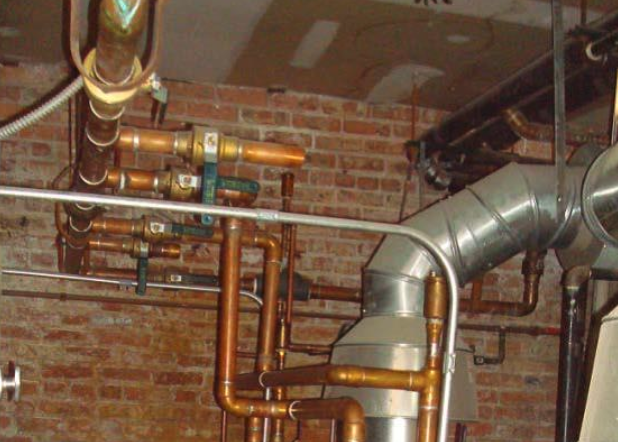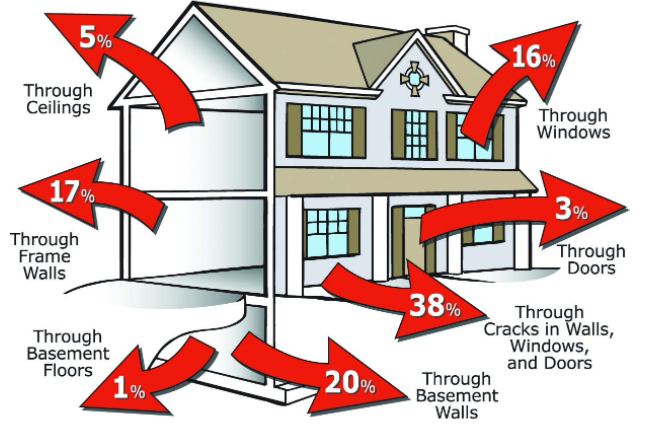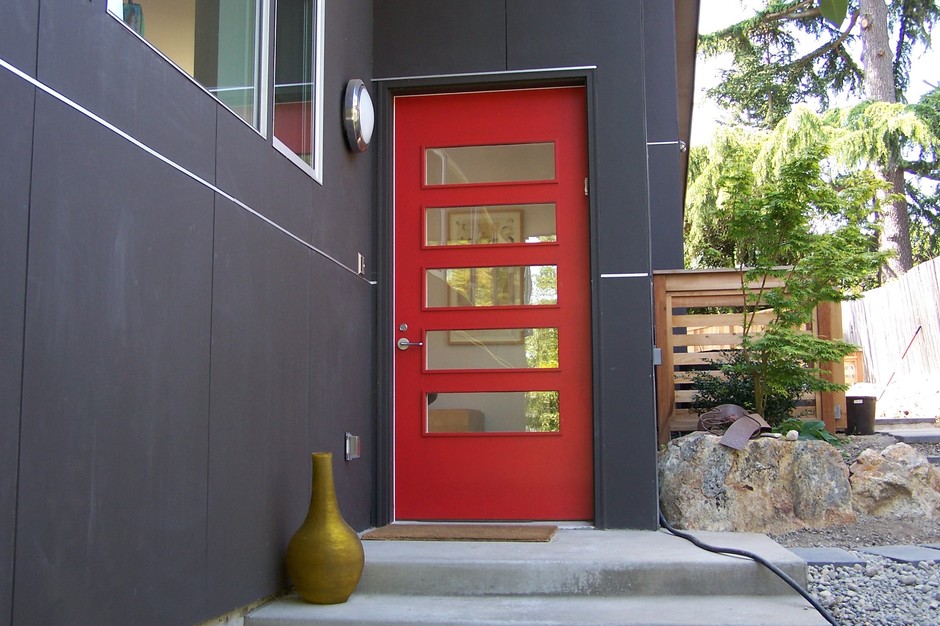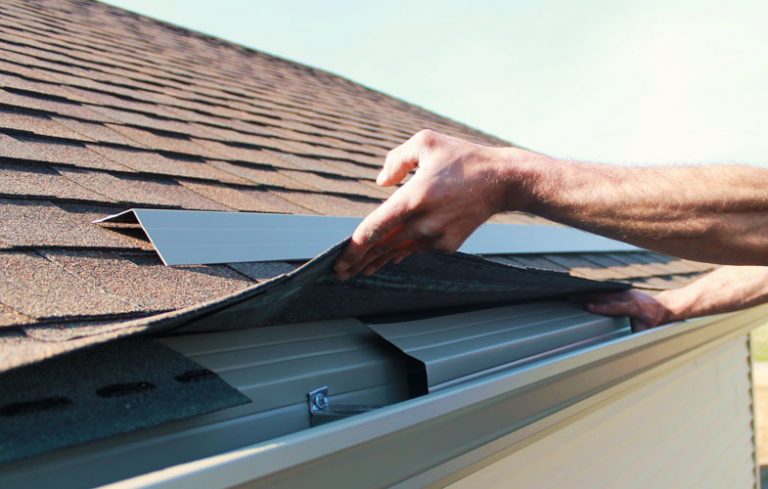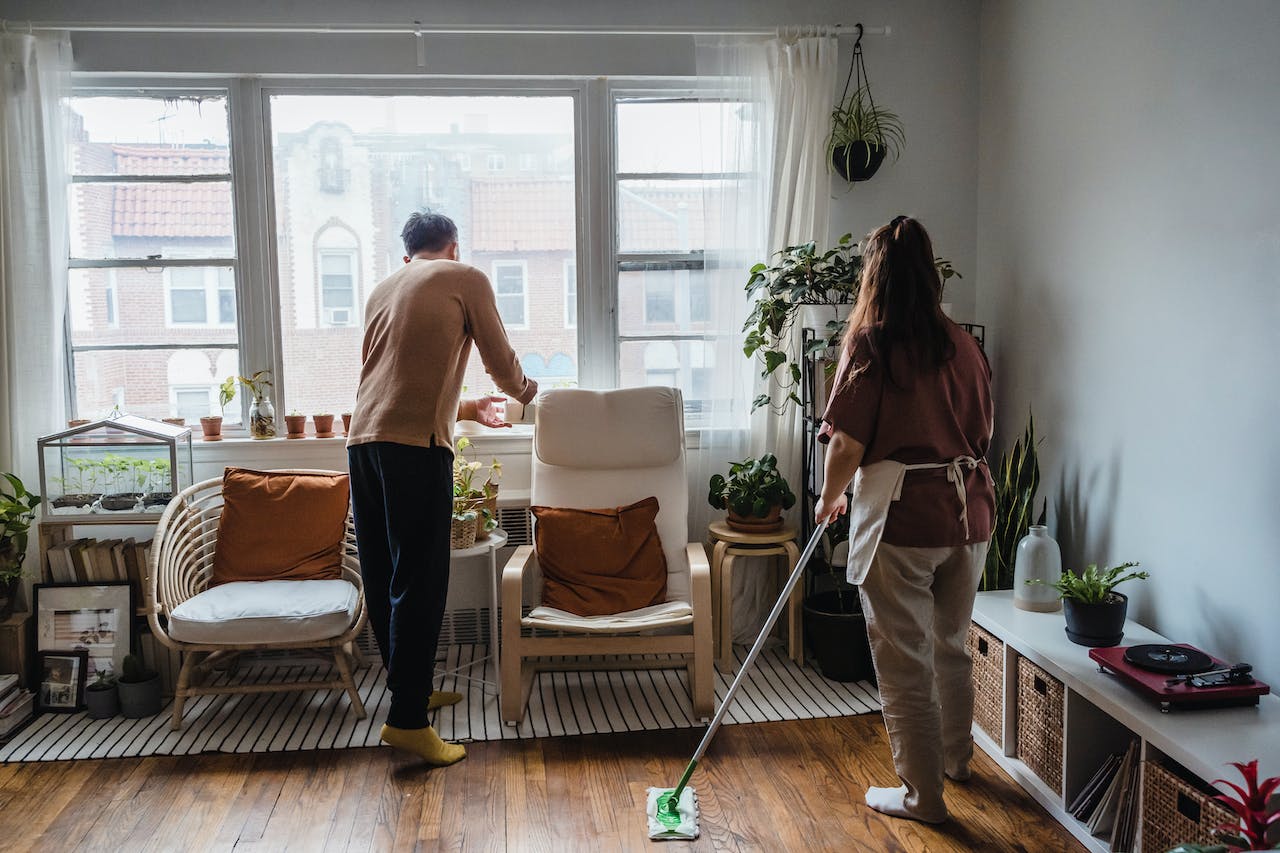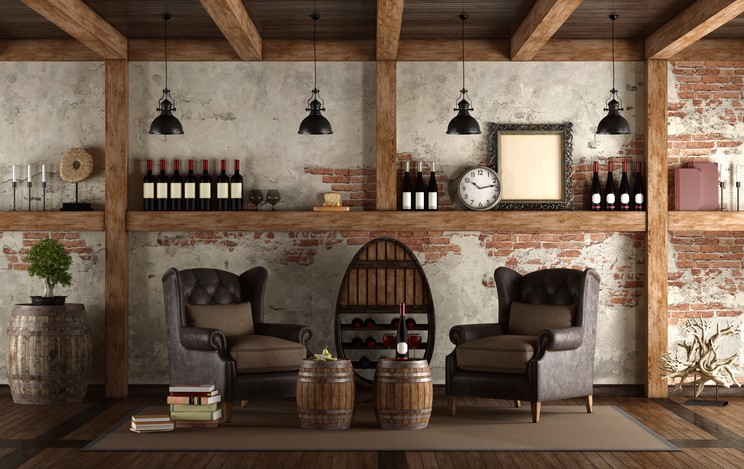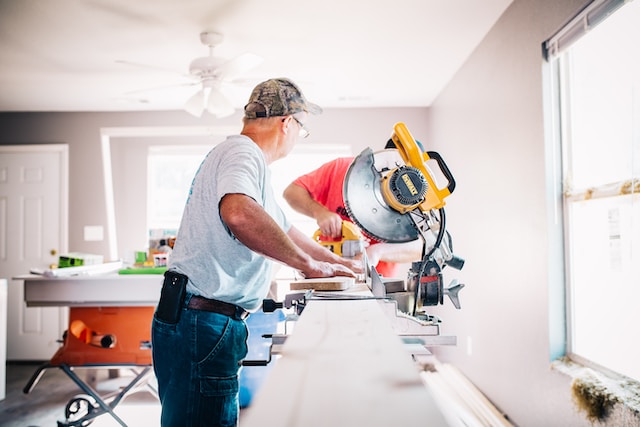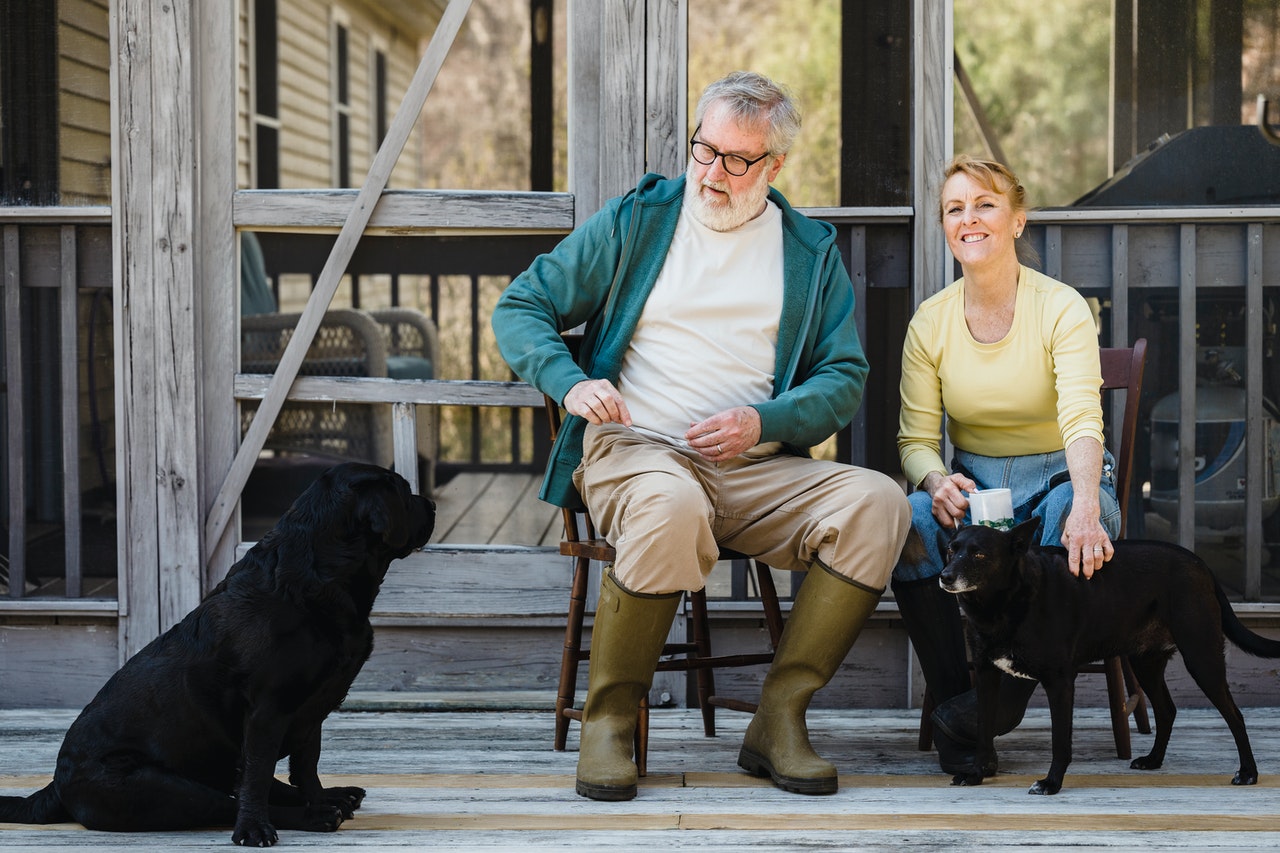Autumn is a fabulous time for home improvements. It’s not too hot, not too cold, and you are hopefully well-rested and full of energy to tackle the home improvements that matter the most.
1. Insulate and Protect Exposed Water Pipes
Did you know? Making sure that any exposed water pipes in your crawlspace and attic are properly insulated from frigid weather is a critical step to take, even if you live in a relatively mild climatic zone where freezing temperatures are uncommon. According to State Farm, frozen water pipes are a problem in both cold and warm areas, affecting more than quarter-million homes annually!
The more insulation you use around any exposed pipes the better protected they will be. Depending on the number and length of exposed water pipes in your home and their accessibility, it will cost you anywhere from $200 to $400 to have them professionally insulated.
2. Air Sealing
Did you know? With severe cold weather, even a tiny air leak or crack can let in enough cold air to cause exposed pipes to freeze. Air leaks can negatively affect the overall level of comfort in your home, while also increasing your heating and cooling costs. Air leaks can also contribute to moisture issues, leading to mold and rotting damage in your home.
Use caulk and weatherstripping to seal any air leaks in the most sensitive areas in your home. Common areas to check for potential air leaks are basement walls, cracks in walls, doors, and windows, attic floor, ceilings, air ducts, wiring holes, attic hatches, basement framing, etc.
Whether you go the DIY route or hire a pro, air sealing will not only save you money and prevent unnecessary energy losses, but it will also help improve air quality and durability of your home.
3. Install a New Entry Door
Your home’s front door is what you and your guests see right before entering your prized castle. Does your front door make the right first impression? If not, then installing a new entry door can help improve the overall curb appeal of your home, while also improving your home’s energy efficiency and level of comfort.
Did you know? Replacing an old entry door with an Energy Star-certified exterior door can reduce your heating and cooling costs by as much as 10%.
In terms of costs, you can expect to pay around $1,500 for a basic new steel door installed professionally. A steel door offers tremendous value for the money. According to Remodeling Magazine, you can expect an ROI of over 90%!
A fiberglass door is another great, stylish exterior door option for homes. Fiberglass doors can replicate the beauty of natural wood with none of the hassles. According to Provia, fiberglass entry doors are ideal for harsh or humid climates. They won’t shrink, warp, split, crack or delaminate.
Cost-wise, fiberglass doors cost roughly twice as much as their steel counterparts. Expect to pay in the range of $2,500 to $3,500 for a new fiberglass door installed by pros. ROI for a new fiberglass door hovers around 80%.
4. Dress up your Home in New Siding
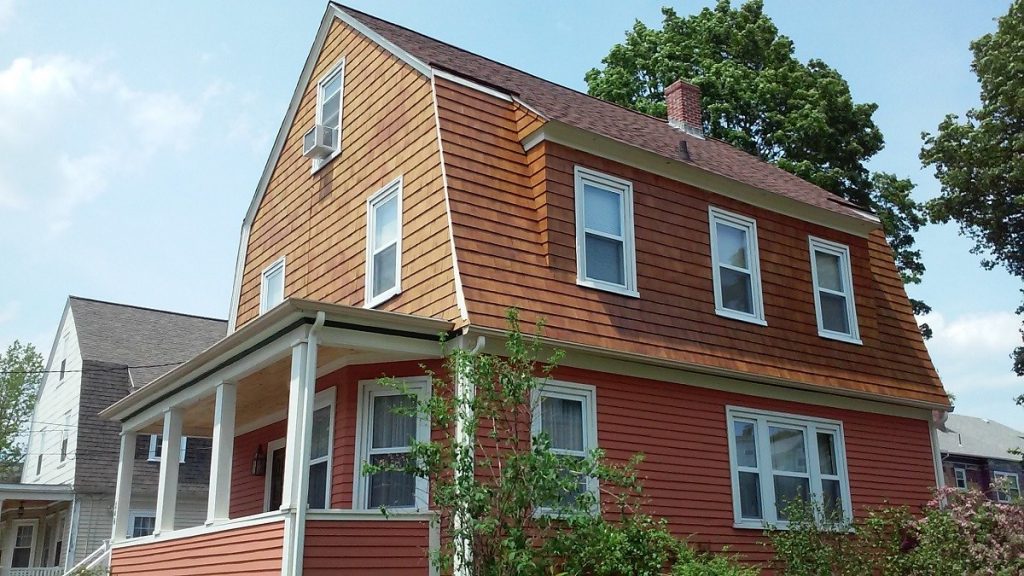
If you are getting tired of the peeling paint on the exterior walls of your home and can’t fathom having to do yet another repainting job, then installing new siding may be the way to go. A well-done siding job can dramatically improve the curb appeal of your home, while also boosting your home’s durability, comfort, and air quality.
Did you know? Installing new siding will not only help improve the aesthetics of your home, but new siding will also create a potent moisture and water barrier all-around your house. Keeping the moisture out will help prevent the rotting of the wood and eliminate the potential for damage to your home’s walls and insulation. All siding installations should involve the installation of a new house wrap and replacing caulk around windows and doors. — These improvements will create moisture barrier around your home and help reduce air leaks responsible for costly energy losses.
While there is some debate on what the best siding option for homes is today, we can safely say that depending on your home’s location and style of neighboring properties, you can’t go wrong with an insulated (foam-back) vinyl siding, fiber cement, or LP siding. All of these siding types essentially mimic bevel wood siding and any of these three options, when installed professionally, will give your home a nice facelift and help improve its durability and level of comfort.
Cost-wise, a typical professional siding job will range in price from $10,000 to $20,000 for foam-back vinyl siding, and from $15,000 to $25,000 for fiber cement or LP SmartSide Siding, depending on your home’s size and location.
You can expect an ROI or cost-to-value return of 70% to 80% depending on the siding option you chose to install and the overall cost of the job, with an added bonus of a “joy factor” of up to 100% for the homeowner.
5. Install a New Roof
Let’s face it, winter can be the worst time to have to replace a roof, but many roofs fail during winter. Heavy snowfall, precipitous rain, and unforgiving freeze and thaw cycles can cause an old roof that is already at the end of its service life to fail. That’s why autumn is a perfect time to replace that old roof before it gets too cold, snowy or rainy to do any roofing work.
Asphalt shingle is the most popular roofing option for homes with pitched roofs. If you are planning to replace a roof with asphalt shingles this Fall, it’s best to go with architectural or dimensional shingles rated for wind speeds of up to 130mph. If you live in a hurricane-prone area, then you should absolutely stay away from the 3-tab shingle, as it will only withstand wind-speeds of up to 60 mph – 70 mph.
While asphalt shingles are still the predominant roofing option for homes in the US, many homeowners increasingly choose metal roofing as a greener, more durable, and longer-lasting alternative to asphalt. According to RoofingCalc.com, metal roofing can be a great option for places that commonly experience heavy snowfall, rapid temperature changes, and for hurricane-prone areas.
Did you know? High-end metal roofs, such as standing seam are designed to shed heavy accumulations of snow off the roof, thereby preventing ice dams from forming during heavy snowstorms that are so common in the Midwest and Northeast. In hotter climates, metal roofs can help significantly reduce a home’s heat gain by reflecting solar radiant heat, thereby reducing a home’s air-conditioning costs.
Cost-wise, a typical asphalt shingle roof will cost in the range of $7,000 to $14,000, depending on your roof’s size, complexity, and your home’s location. ROI for an asphalt roof will be around 65% to 70%, but since you do need a new roof to protect your home from the elements, the main ROI will be your peace of mind, knowing that your home is protected.
A metal roof for an average home will cost anywhere from $7,000 to $28,000, depending on the roof size, complexity, choice of metal roofing material, and your home’s location. With metal roofing, there will be a wider variation in price than with asphalt. For instance, a ribbed metal roof with exposed fasteners installed on a home in Oklahoma, will cost significantly less than a high-end standing seam metal roof installed on home in a more expensive real estate market.
That being said, ROI for a metal roof can range from 85% to 95%, thereby making it a wise long term investment in your home.
What kind of home improvement upgrades are you planning to get done this fall?

